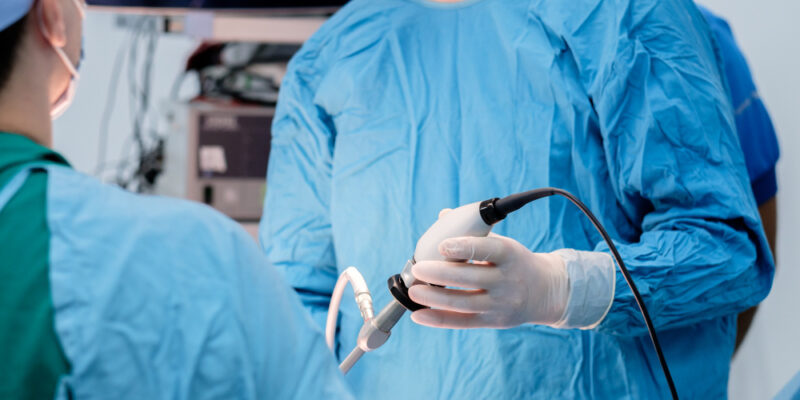When it comes to diagnosing and monitoring various gastrointestinal conditions, both endoscopy and colonoscopy are common procedures that doctors use to get a closer look inside the body. While they share similarities, these two procedures have distinct purposes and are used in different contexts.
Understanding the key differences between endoscopy and colonoscopy can help you make informed decisions about your health and know what to expect if your doctor recommends one of these procedures.
What is an Endoscopy?
An endoscopy is a medical procedure that allows doctors to examine the interior of the digestive tract using a flexible tube equipped with a light and camera. The term “endoscopy” is often used broadly to refer to various types of procedures that involve inserting this tube, or endoscope, into the body.
However, it specifically refers to procedures that examine the upper digestive tract, including the esophagus, stomach, and the first part of the small intestine (duodenum).
Endoscopies are commonly performed to investigate symptoms such as persistent heartburn, difficulty swallowing, unexplained chest pain, or upper abdominal pain. They can also be used to take tissue samples (biopsies) or to treat certain conditions, such as removing polyps or dilating narrowed areas of the digestive tract.
What is a Colonoscopy?
A colonoscopy, on the other hand, is a specific type of endoscopy that focuses on examining the lower part of the digestive tract, specifically the colon (large intestine) and rectum. The procedure is similar to an upper endoscopy, but the endoscope is inserted through the anus rather than the mouth.
This allows doctors to visualize the entire length of the colon and rectum, making it an essential tool for detecting colon cancer, polyps, inflammatory bowel disease (IBD), and other conditions affecting the lower gastrointestinal tract.
Colonoscopy is particularly recommended for individuals over the age of 50 as a screening tool for colorectal cancer. It is also used to investigate symptoms such as chronic diarrhea, rectal bleeding, and unexplained changes in bowel habits.
Key Differences Between Endoscopy and Colonoscopy
Area of Examination
The most significant difference between endoscopy and colonoscopy lies in the area of the body they examine. Endoscopy typically refers to the examination of the upper digestive tract, including the esophagus, stomach, and duodenum. Colonoscopy, by contrast, is used to examine the lower digestive tract, including the colon and rectum.
This difference in focus means that each procedure is suited for diagnosing and monitoring different types of conditions. For example, an endoscopy might be used to investigate the cause of upper abdominal pain, while a colonoscopy would be used to screen for colon cancer or investigate symptoms like rectal bleeding.
Preparation Requirements
Both procedures require some preparation, but the specifics differ. For an endoscopy, patients are usually asked to fast for several hours before the procedure to ensure the stomach is empty, which provides a clearer view of the upper digestive tract.
In contrast, preparing for a colonoscopy is more involved and requires the patient to follow a clear-liquid diet and take a bowel-cleansing laxative the day before the procedure. This preparation is necessary to ensure that the colon is completely empty, allowing the doctor to get an unobstructed view of the entire colon.
Sedation and Recovery
Another key difference between the two procedures is the level of sedation typically used. Endoscopy usually requires mild to moderate sedation, and some patients may even undergo the procedure with only a local anesthetic applied to the throat. This generally results in a quicker recovery time, and many patients can resume normal activities shortly after the procedure.
Colonoscopy, on the other hand, often involves deeper sedation, as the procedure can be more uncomfortable due to the insertion of the endoscope into the colon. This deeper sedation means that recovery time may be longer, and patients are usually advised to rest for the remainder of the day following the procedure.
When to Use Each Procedure
When is an Endoscopy Recommended?
Endoscopy is typically recommended when a patient presents with symptoms that suggest a problem in the upper digestive tract. These symptoms may include persistent heartburn, difficulty swallowing, unexplained weight loss, or vomiting.
Endoscopy is also commonly used to diagnose conditions such as gastroesophageal reflux disease (GERD), ulcers, celiac disease, and stomach cancer. In some cases, endoscopy may be used to treat certain conditions, such as removing foreign objects or stopping bleeding in the upper digestive tract.
When is a Colonoscopy Recommended?
Colonoscopy is most commonly recommended as a screening tool for colorectal cancer, particularly for individuals over the age of 50 or for those with a family history of the disease. It is also used to investigate symptoms such as chronic diarrhea, unexplained changes in bowel habits, or rectal bleeding.
Colonoscopy can detect polyps, which can be removed during the procedure to prevent them from becoming cancerous. Additionally, colonoscopy is used to monitor patients with inflammatory bowel diseases like Crohn’s disease and ulcerative colitis.
Making the Right Choice
Both endoscopy and colonoscopy are valuable diagnostic tools that provide critical insights into the health of the digestive system. While they have different applications and areas of focus, understanding the differences between these procedures can help you and your doctor determine which is most appropriate for your specific symptoms or screening needs.
Whether you’re dealing with persistent gastrointestinal symptoms or simply following recommended cancer screening guidelines, knowing when to use each procedure is key to maintaining your digestive health.













Comments